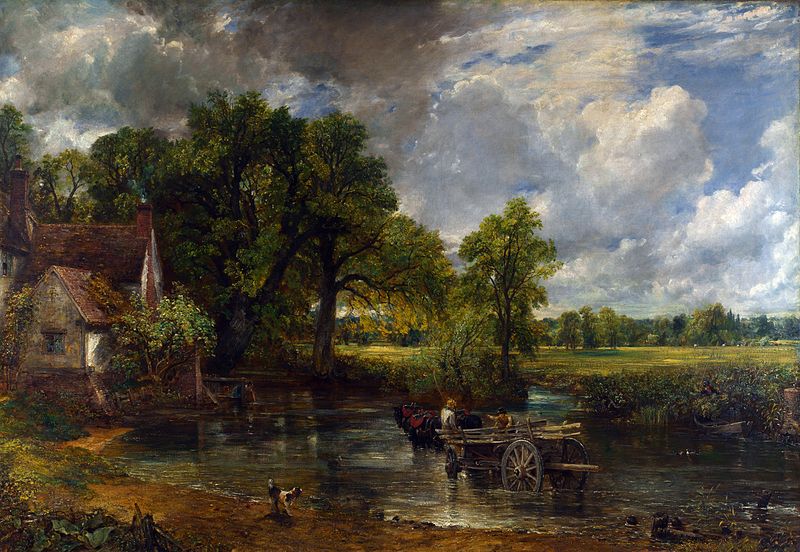
The Haywain, John Constable, Oil on canvas, 1821, National Gallery, London
Constable’s “The Hay Wain” is a renowned landscape painting that reflects elements of Georgics philosophy, an ancient Roman literary work by Virgil that focuses on agricultural life and the harmony between humans and nature.
In the painting, Constable depicts a rural scene with a hay wain (a horse-drawn cart) crossing a river. The composition highlights the beauty and tranquility of the countryside, emphasizing the importance of agrarian life and the connection between humans and the land they cultivate.
Georgics philosophy celebrates the virtues of rural life, promoting a deep appreciation for the natural world and its cycles. Constable’s painting captures this sentiment through the idyllic depiction of the landscape and the working-class farmers tending to their land. The careful attention to detail and the serene atmosphere evoke a sense of harmony with nature, reminiscent of the Georgics’ emphasis on the unity between humanity and the environment.
By portraying the hay wain as a central motif, Constable symbolizes the cycle of agricultural activities and the timeless relationship between humans and the land. This aligns with the Georgics’ themes of agricultural labor, the rhythms of the seasons, and the importance of respecting and working in harmony with nature.
Overall, Constable’s “The Hay Wain” aligns with Georgics philosophy by celebrating the beauty of rural life, emphasizing the significance of agriculture, and conveying the idea of humans as coexisting with and respecting the natural world.
